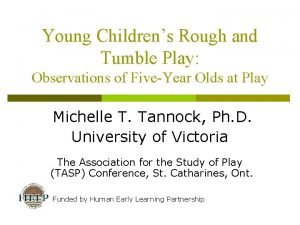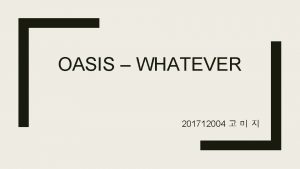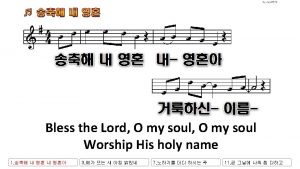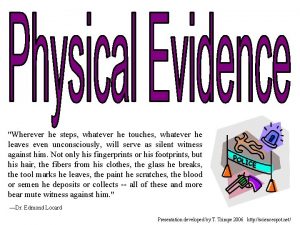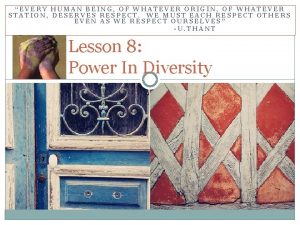Culture a rough and ready definition Culture whatever










- Slides: 10

Culture: a rough and ready definition Culture = whatever we acquire through social learning, social transmission.

A few properties of culture 1. It is abstract/immaterial -- a learnable form that produces perceptible objects in the world (like dance steps or sounds or clothes or gestures). 2. It moves through space and time by passing from individual to individual, group to group. 3. It tends to undergo some change in the course of its transmission.

Categorization schemes (including race) are part of culture • they are learnable forms -- employing words like “white, ” “black, ” etc. • they travel through space and time • they undergo change in the course of their journey EXAMPLE: U. S. census questions


Questions from the 1930 Census Place of Abode 1. Street, avenue, road, etc. 2. House number (in cities or towns) 3. Number of dwelling house in order of visitation 4. Number of family in order of visitation Name 5. Name of each person whose place of abode on April 1, 1930, was in this family. Relation 6. Relationship of this person to the head of the family. Home Data 7. Home owned or rented. 8. Value of home, if owned, or monthly rental, if rented. 9. Radio set. 10. Does this family live on a farm? Personal Description 11. Sex. 12. Color or race [White (W), Negro (Neg), Mexican (Mex), Indian (In), Chinese (Ch), Japanese (Jp), Filipino (Fil), Hindu (Hin), Korean (Kor), other races spelled out in full. ] 13. Age at last birthday.

Questions from the 1890 Census HEAD OF HOUSEHOLD Full name (SURNAME, first middle): Date born (month-day-year) Relationship (Head, Wife, S-Son, D-Daughter, etc) Sex Race (W=White, C=Colored, I=Indian, A=Asian) Age in 1890 Place born (town-county-state or country) SPOUSE: Full name (SURNAME, first middle. Include maiden name if known. ): Date born (month-day-year) Relationship (Head, Wife, S-Son, D-Daughter, etc) Sex Race (W=White, C=Colored, I=Indian, A=Asian) Age in 1890 Place born (town-county-state or country)

Questions from the 1790 Census Name of Head of Household Number of free white males 16 & over Number of free white males under 16 Number of free white females (age not specified) Number of all other free persons Number of slaves

Social function of the categorization scheme • Censuses provide information for administrators as to how to manage a population (for example, taxation). • Social groupings (race, ethnicity, gender, caste, etc. ) represent culturally recognized groupings within the society. • The cultural recognized groupings are potential political interest groups.


 Rough and ready definition
Rough and ready definition Stay ready so you don't have to get ready
Stay ready so you don't have to get ready Hello boys and girls
Hello boys and girls Rough and tumble play definition
Rough and tumble play definition Finally brothers whatever is true
Finally brothers whatever is true Gas pressure
Gas pressure Do gases exert pressure on whatever surrounds them
Do gases exert pressure on whatever surrounds them Lasciviousness definition
Lasciviousness definition Whatever you tolerate will dominate
Whatever you tolerate will dominate Oasis free to be whatever
Oasis free to be whatever Whatever system
Whatever system



